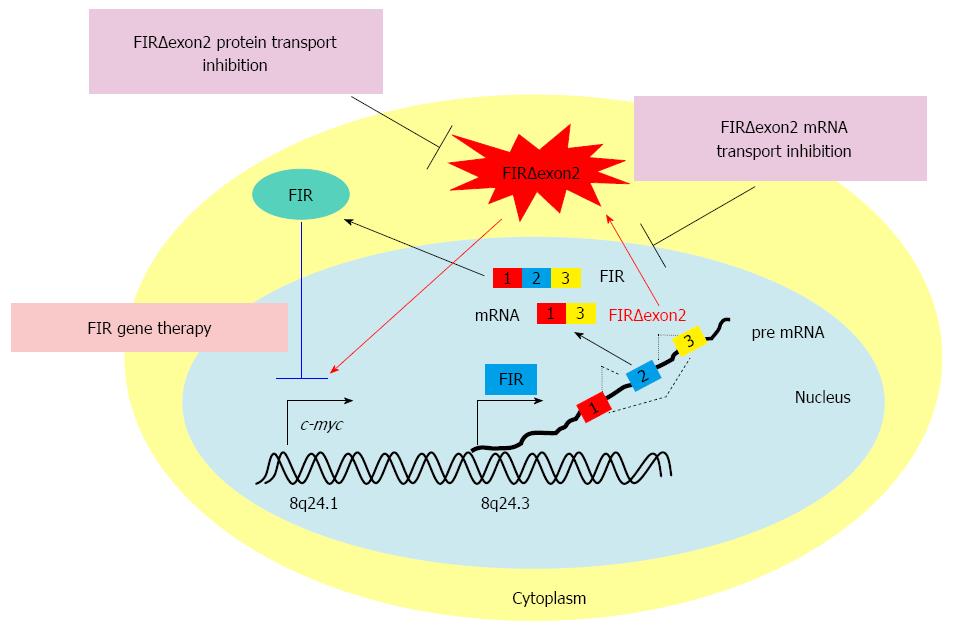Copyright
©2014 Baishideng Publishing Group Inc.
World J Gastroenterol. Dec 14, 2014; 20(46): 17305-17313
Published online Dec 14, 2014. doi: 10.3748/wjg.v20.i46.17305
Published online Dec 14, 2014. doi: 10.3748/wjg.v20.i46.17305
Figure 2 A model of cancer diagnosis and treatment targeting alternatively spliced variant forms.
c-Myc has a critical role in cell proliferation and tumorigenesis. An far upstream element binding protein-interacting repressor (FIR) splice variant that lacks exon 2 (FIRΔexon2) activates c-myc transcription by disabling authentic FIR repression of c-myc in cancer cells[40]. FIR gene therapy is a potential cancer treatment[98]. FIRΔexon2 protein inhibition of transport into the nucleus and/or FIRΔexon2 mRNA inhibition of export into the cytoplasm may be potential molecular targets for future cancer therapy for suppression of c-Myc. FIR and/or FIRΔexon2 mRNAs in peripheral blood are potent biomarkers for cancer detection[97].
- Citation: Rahmutulla B, Matsushita K, Nomura F. Alternative splicing of DNA damage response genes and gastrointestinal cancers. World J Gastroenterol 2014; 20(46): 17305-17313
- URL: https://www.wjgnet.com/1007-9327/full/v20/i46/17305.htm
- DOI: https://dx.doi.org/10.3748/wjg.v20.i46.17305









